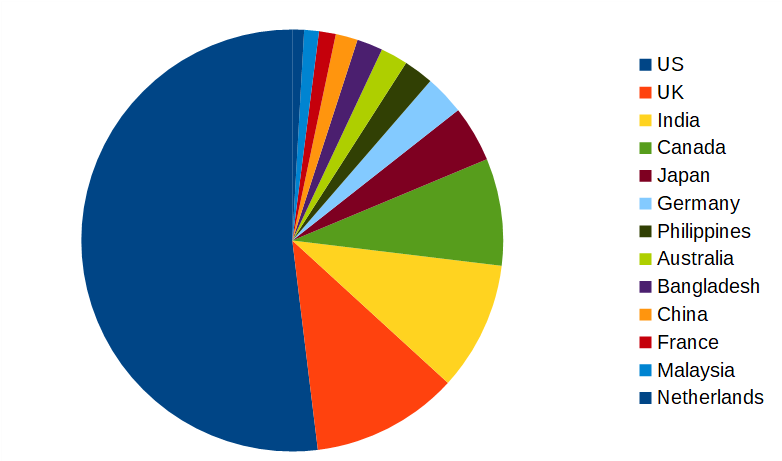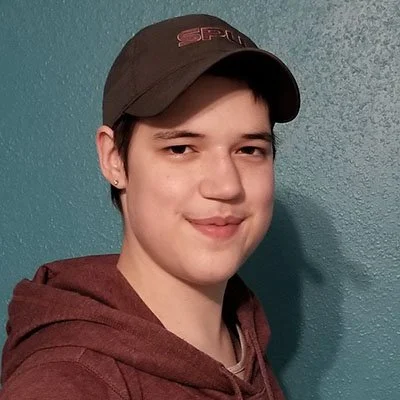International Space Elevator Consortium
September 2020 Newsletter
In this Issue:
Editor’s Note
President’s Corner
August Webinar Results
New Liaison to India
History Corner
Who is interested in the Space Elevator?
World Space Week
Meet the Interns
Online Workshop for ISEC Members
ISEC Conference at ISDC
Upcoming Events
Contact Us/Support Us
Editor’s Note
Dear Fellow Space Elevator Enthusiast,
I typically use my editorial to catch the readers up on the latest news and/or video links that don’t have an article associated them. This month, I will leave you with just one because the History Corner is chock full of them, fifteen, to be precise! And I didn’t include the entire article. It is only the first part to save space!
Your bonus video is an interview with Adrian Nixon by the National Graphene Association, aptly named “Nixon talking about space elevator and how graphene fits into the picture.”
Here is that promised link!
Enjoy!
Sandee Schaeffer
Newsletter Editor
President's Corner
by Pete Swan
Appropriate Space Access Architecture to Mars
While editing the latest ISEC Year-long study report, I recognized some powerful conclusions. One of the biggest is that Space Elevators will stand up strong next to rockets and help enable movement off-planet. The whole topic needs development and presentation out in the space community to encourage invitations to sit at the table when planning future expansions. Here is a quick look at the direction we must go and the message we must send:
When we look at the Moon and dream of spaceflight, we forget how extremely difficult it was to accomplish -- both in energy and design complexity. Tsiolkovsky's rocket equation consumes so much mass to achieve orbit that, historically, we have been restricted as to what we can deliver. Now that we have decided to go to the Moon and on to Mars in a combined international, government, and commercial effort of great magnitude, we need to expand our vision of 'how to.' It would seem that the establishment of a more robust infrastructure with reusable rockets and permanent Space Elevators must be developed. ISEC will develop and present the strengths and weaknesses of the two major components of this combined architecture with the purpose of placing mission equipment and people where they need to go and when they need to be there. The multiple destinations, complexity of orbits, magnitude of each transition to orbit, and infrequent launches currently means that the difficulty of fulfilling the dreams of the many is a monumental "reach." Expanding space access architectures to include Space Elevators will enable a robust movement off-planet.
During the discussions we reached across the strengths of rocket launches along with their difficulties. We recognize there are three principle strengths:
Rockets are successful today and great strides are forecasted for the future
Reaching any orbit can be achieved
Rapid movement through radiation belts for people enables flights to the Moon and Mars.
The strengths of a Space Elevator are, a permanent structure that provides daily, routine operations that enable environmentally responsible, reliable and economic access to space. These strengths will be compared to the difficulties of executing a Space Elevator developmental program. Space Elevators will not be ready for initial human migration off-planet. However, once colonies are established on the Moon and Mars using rockets, Space Elevators will enable robust growth by moving massive cargo, daily, inexpensively, environmentally friendly, and routinely.
Keep Climbing!
Pete
August Webinar Results
Fourth ISEC Webinar Presented
On Friday, August 28th, Michael (Fitzer) Fitzgerald, presented a webinar titled, “Architecture Engineering for the Space Elevator” covering such topics as:
The Galactic Harbour
Space Elevator Segments
Architecture Engineering
Technology Maturity
Transportation Elixir
Interplanetary Transportation Network
You can listen to the recording of the webinar at https://www.isec.org/recorded-webinars.
The slides are also available as a downloadable PDF at that same link.
Two webinars will take place October. One is for World Space Week titled, "Appropriate Space Access Architecture for Mars," on 10 October 2020 at 2 pm UTC. (See article, below.)
The other webinar is a members-only meeting being held on Friday, October 9th. (See article, below.) Have you signed up yet to become a member? We hope to see you there!
New Liaison to India
by Peter Robinson
Welcome, Souvik!
We would like to welcome Souvik Mukherjee to ISEC as our latest student member. Some of us met Souvik at the 2019 ISDC conference in Washington DC where he spoke at our Space Elevator session and took part in the Panel discussion, as reported in our July 2019 newsletter. Souvik will be taking the role of Indian Liaison Representative with the objective of increasing awareness in India of ISEC and the potential of the Space Elevator.
History Corner
by David Raitt
The Space Elevator - a Videography
Editor’s Note: This is the first part of two parts due to length.
For this month’s History Corner, I thought I’d take a look at some of the many short videos, films, news clips and animations pertaining to space elevators and their history, construction and use that are available on the Internet. It is by no means inclusive - there are numerous short films or videos on the space elevator concept available, some featuring decent animations and photography as well as some with people just talking about space elevators. YouTube, in particular, has many clips on space elevators posted over the years, some featuring very nice artwork, though, unfortunately some appear to be no longer available. Rather than putting the offerings below in date order, I have tried to arrange them in different categories so far as possible, such as Lectures and Interviews; Companies and Organizations; Artistic Inspirations; TV and Films; and General - though there will be some inevitable overlap between the groups. I have not attempted to review or discuss the contents of the videos, just merely to note their existence.
Lectures and Interviews
“The Space Elevator: 'Thought Experiment', or Key to the Universe?” was the topic of Arthur C. Clarke’s paper presented at the 30th IAC in Munich, Germany in 1979 and published in 1981. The text was posted by Marc Boucher in 2003 prefaced by a great video explaining the technology and materials and experiments through interviews with various people, including Brad Edwards. (http://spaceref.com/space-elevator/the-space-elevator-thought-experiment-or-key-to-the-universe-by-sir-arthur-c-clarke.html).
Clarke, himself, discusses the problem of debris and how to clear it while talking about how the space elevator will open up space tourism and a host of other applications and benefits not yet thought of, the use of Buckminster Fullerines, life on Mars and elsewhere and so on (https://www.youtube.com/watch?v=uZSrAoMzRm8). It is in this video clip, posted in November 2008, that Clarke announced that the space elevator would be built ten years after everyone stops laughing! In fact, Clarke obviously changed his views because 30 years earlier in 1979 in his published his paper “The Space Elevator: ‘Thought Experiment’, or Key to the Universe?” (see above) he wrote it would be 50 years. Clarke died in March 2008 and in the video clip he said he was 86 years old - so that means the video was actually from 2003, i.e. just after Brad Edwards did his NIAC II study and opined the space elevator could be built in about 15 years! The video was probably made during the 2nd Annual Space Elevator conference in Santa Fe, New Mexico in September 2003 which featured Clarke in Sri Lanka talking to the audience via a live video satellite link.
There is nice colourful video from 2012, entitled “Arthur C. Clarke’s Space Elevator,” which discusses Clarke’s 1969 epiphany and vision as subsequently outlined in “Fountains of Paradise.” The video features Michael Laine reviewing his ideas of a space elevator and with commentary from Arthur C. Clarke, Michio Kaku, Kim Stanley Robinson and others at https://www.youtube.com/watch?v=Xdr6zXXrTbg.
In a very nice original video posted in 2011 entitled “Yuri Artsutanov: The Space Elevator,” travelling with his Australian-resident relative, filmmaker Eugene Schlusser, to a former communal farm in remote Western Russia in search of the 2nd World War grave of Eugene’s uncle Vladimir Schlusser, Yuri Artsutanov explains how a space elevator will work and why he developed the idea. The video has many good shots of Yuri including black and white photographs. (https://www.youtube.com/watch?v=UK-q6f8SUCE).
Jerome Pearson’s Keynote Speech at the 2013 ISEC Space Elevator Conference was entitled “Sir Arthur C. Clarke and the Space Elevator.” In it, Jerome talked about the noted science fiction author, Sir Arthur C. Clarke, and discussed not only the research Clarke did on the space elevator but also the latter’s meeting with Yuri Artsutanov. Jerome also covered the long history he had together with Sir Arthur. Among other things, Jerome explained how, following a letter to him from the author in 1976. he provided technical expertise for Sir Arthur when he was writing his science fiction classic, The Fountains of Paradise. The video provides many hitherto unknown aspects of space elevator history and is amply illustrated. (https://vimeo.com/114408967).
“Dr. Bradley Edwards - Space Elevator” posted by ideacity in 2015. Brad Edwards gives a good overview of space elevator history and construction starting with Arthur C. Clarke’s seminal book and the subsequent NASA take on his ideas, before Brad discusses his own architecture. The 20 min or so video also includes Brad’s own initial video on the space elevator. (https://www.youtube.com/watch?v=Iojzdq6ARfM).
In this interview with AZO Materials in 2018 on “Space Elevator Technology and Graphene,” Adrian Nixon, CEO of Nixor Ltd, talks about how space elevators work, the main elements, and how 2D materials, particularly graphene, will contribute to them. Helpfully, the transcript of the interview is provided beneath the video. (https://www.azom.com/article.aspx?ArticleID=16371).
And in yet another video, Markus Landgraf, mission analyst at the European Space Agency’s establishment, the European Stroke Organisation Conference (ESOC) in Darmstadt, Germany, who looks for technologies that will open new doors to space, explains how to get to space via elevator in an illustrated talk given at TedxRheinMain in 2013 (https://www.youtube.com/watch?v=f8CpnKBnPC0).
Companies and Organizations
“Shoot the Moon” is a story of sacrifice and a space elevator, directed by Benjamin Harrison. The film, originally due in 2015 after a kickstarter project, is really about Michael Laine of LiftPort and his path over the past fourteen years towards building a space elevator. The film is supposed to feature vintage sci-fi effects depicting a trip from the Earth to the Moon on a lunar space elevator and shot with miniatures (https://www.kickstarter.com/projects/shootthemoon/shoot-the-moon-a-documentary-feature-film). The same trailer, dated 2014, is shown at https://www.slashfilm.com/shoot-the-moon-trailer-space-elevator/ followed by another short video “Shoot the Moon - Teaser” which has Michael discussing his ideas and vision. In 2016, the LiftPort Group posted a voiceless, animated video concerning the deployment and operation of the “LiftPort Lunar Space Elevator Infrastructure Final from GCU” - a collaboration between DSEA, GCU, and Liftport. (https://www.youtube.com/watch?v=fSzo6mY3LAA).
There is also one (very short) by NASA on the Space Elevator Concept (https://www.youtube.com/watch?v=MkPDKVkVaj0). Although not posted until 2012, it is based on the concepts developed in the NASA workshop on the space elevator held in the year 2000.
The LipTV channel has a short news clip with Lissette Padilla and Gabriel Mizrahi in which they discuss the development of the space elevator following the announcement by the Japanese company Obayashi that they will have a space elevator constructed by 2050 due to the advances in carbon nanotubes. The elevator will reach 96,000km into space and will transport people and cargo to a new space station (https://www.youtube.com/watch?v=33guUBZFxYQ). In another Japanese news item, in 2018 TomoNews posted a video entitled “Japan’s space elevator to connect Earth with ISS via cable” - the idea being developed by a group of researchers from Shizuoka University.
“The Space Elevator” was the title of a 2015 presentation from the Japanese NHK World - Science View. In the almost 30-minute video clip, about 2 mins 30 secs in and lasting until 20 mins in, the space elevator is discussed under the topic of Leading Edge. A space elevator is first described with animation, and then the presenters talk about the limitations of rockets and the technological accomplishments that are required, next animation describes how it might work using a cable being deployed (with discussion of Yuri Artsutanov’s work.) Subsequent presenter talk discusses Japanese plans for the construction of a space elevator over 25 years and further animation shows how the extended cable would be made and how long it would take, and the climber’s power source (with explanation by Ben Shelef.) The presenters finally discuss how a space elevator could be the key to solving some of Earth's problems, not least, offering cheap access to space. (https://www.youtube.com/watch?v=LBhuazAxbIw).
A space elevator sounds like science fiction, but scientists are still actively trying to make it a reality. Here’s what you need to know, according to Seeker in 2018 in the video “We’re One Step Closer to a Space Elevator.” The cost and problems of using rockets to get into space and the advantages of a space elevator are thus postulated, as well as the difficulty of finding a suitable material for the tether. The work by Japan’s Obayoshi is also discussed. (https://www.youtube.com/watch?v=vYTypQO6liA).
Another short video simply called “Space Elevator” by channel “mic of orion” has decent graphics and voice over (although Mic has a cold!) also posted in 2018 starts with the recent news of a Japanese company wishing to build a space elevator, and being quite serious about their plans, they commissioned a study by a team from Shizuoka University's Faculty of Engineering to look at the feasibility of building such an elevator. The video goes on discuss the plans as well as difficulties of constructing an elevator and the forces that would come into play and asks whether it is a crazy idea. What is useful about this particular clip is that the entire voice-over transcript is available under the video. (https://www.youtube.com/watch?v=uEQjznqvjxI).
First shown on the This is Genius channel in 2014, there is a short clip entitled “Space Elevators - Coming to You in 2025 - This is REAL Genius.” It is based on the first International Academy of Astronautics study report on the space elevator “Space Elevators: An Assessment of the Technological Feasibility and the Way Forward” and notes we could feasibly have the first space elevators into Low Earth Orbit as soon as 2025, with more ambitious cables carrying 20 tonnes or so to geostationary orbit from 2035. The system could lift as much as a space shuttle every two days for a fraction of the cost, making missions to the moon and Mars, and extraterrestrial mining, more realistic (https://www.youtube.com/watch?v=fkfYEJf8ieQ). More details on the space elevator are given in the short video on the same channel in 2014 called “Five Strangest Ways to Get into Space” (https://www.youtube.com/results?search_query=five+strangest+ways+to+get+into+space). Both these videos are voiced by Sam Datta-Paulin and have good imagery.
For Part 2 of this article, see next issue.
Who is Interested in Space Elevators?
by Peter Robinson
We know that more and more people are interested, but until now we have only known the names of our members, event attendees, social media followers and you (our loyal newsletter readers).
Those of us who use Facebook know that they know all about us(!) and we can now extract demographic details of the 2000+ people who follow the ISECdotORG page. This shows some intriguing details. For example, we never realised that we had more Facebook followers in Kolkata (Calcutta) than any other city in the world!
Facebook statistics may be skewed by the demographics of Facebook as a whole, and of course this is only a subset of all those interested in the Space Elevator future: fortunately, we have another data source, our new website. Our website host (Squarespace) provides us with the geographic location of every website visitor.
The chart below shows the result of combining the two data sources with equal weighting. You can see that by far the greatest interest is from the US, but it may surprise some that India is competing with the UK and Canada for second place.
How will we use this data? We’ll give that some more thought, your ideas are welcome! Write to us at newsletters@isec.org.
World Space Week ISEC Webinar
The Board of Directors has approved ISEC's involvement in this year's World Space Week (WSW) activities. We will be conducting a Webinar entitled "Appropriate Space Access Architecture for Mars," on 10 October 2020 at 2 pm UTC. This webinar will discuss the strengths of this combined architecture. Expanding the space access architecture concept to include space elevators will enable a robust movement off-planet. This dual architecture surfaced upon completion of the latest ISEC study: "Space Elevators are the Transportation Story of the 21st Century," available at www.isec.org under the RESOURCES tab as STUDIES. Peter Robinson is also enabling ISEC to participate inside WSW in a joint effort with the British Interplanetary Society to have a series of questions for everyone, around the world, to answer about space and space elevators.
World Space Week is an annual holiday observed from 4 to 10 October in over 90 nations throughout the world. World Space Week is officially defined as, "an international celebration of science and technology, and their contribution to the betterment of the human condition."
ISEC Summer Internship Program
by Pete Swan
Interns Complete the Summer
Craig Orrock is a Mechanical Engineering student at the University of Heriot-Watt in Edinburgh. He has a passion for space and tries to share this passion with as many people as he can, by volunteering for UKSEDS, the UK branch of SEDS. Craig is looking to become a propulsion engineer when he graduates and to get involved in Scotland's rapidly growing space sector. His thesis is, “Applications and Uses of Robotics for a Space Elevator.”
Craig Orrock
Amelia Stanton studies Mechanical Engineering on an integrated Master’s course at Heriot-Watt University. At the British Interplanetary Society (BIS) she helped organise and run events including the Reinventing Space Conference in Belfast, the Charterhouse Conference, and the UKs first open sourced Rocket Propulsion Conference in Westcott. At the Initiative for Interstellar Studies (I4IS), she contributed to the Second Foundation for Interstellar Studies Workshop, and she is also a member and participant of UK-SEDS. Amelia has also contributed to the Asteria cubesat design project in Edinburgh. Her thesis is, “How Should the Apex Anchor be Developed?”
Amelia Stanton
Elias Rubin is a student studying computer science at Seattle Pacific University intending to graduate in March of 2021. While he works on a wide variety of projects, his most notable to date is a web client application called Tavern, designed to help people create and store character sheets for a tabletop RPG called Pathfinder. Looking forward, he is interested in going into a career of video game development, as well as helping to create and improve open source projects to help further his field. He can be contacted at Eliasarubin@gmail.com. His internship at ISEC includes migration of the newsletter from a Customer Relations Management software program to the new website and helping the website team improve functionality, in general.
Elias Rubin
Lyn Schaeffer is a senior-level undergraduate student at Seattle Pacific University. She is majoring in Classical Antiquities with an emphasis in Latin, but she is also minoring in Economics. She has always had an interest in space and space exploration, and she has attended the ISEC conference a few times in the past. For this project, she is bringing her economics knowledge and skills to provide a new perspective on the funding and operations of the space elevator. She plans to use this research experience in future studies as she heads to graduate school next year in pursuit of a master’s degree in Classical Philology and certification in secondary education. Her thesis is, "The Potential for a Truly International Space Elevator."
Lyn Schaeffer
Online Workshop for ISEC Members
ISEC is trying something new this year. As a benefit to our active members and as a way to maintain the social and professional contacts which usually take place at our Seattle conference, we are inaugurating a members-only online workshop. On Friday, October 9th we will have a two-hour meeting on Zoom consisting of talks, updates and our famous brain-storming session, this year focusing on the space elevator climber-tether interface. At the end of the meeting we will have an open-mic session of unstructured discussion so you can renew old contacts, make new ones, or talk about anything that comes to mind.
Remember, though, this is only for ISEC members. If you are not a member and want to participate, you still have plenty of time to join. Just go to https://www.isec.org/membership and sign up.
ISEC Conference at ISDC
The ISEC Board of Directors has approved our yearly conference for 2021 to be in concert with the National Space Society's International Space Development Conference (ISDC.) Dates are still subject to change but have been determined to be 27-30 May, 2021, and will be held at the Los Angeles Airport Sheraton. More details to be refined and will follow.
The concept is that ISEC will be a main participant in the NSS activities that week. Our own conference will be prior to the ISDC with exciting events covering two years’ progress as we skipped 2020. A full day space elevator session inside the ISDC (current plan); participation with students; an ISEC exhibit in the main hall; and, learn about space activities outside space elevators. We are hoping to have a full conference on space elevators and then take that momentum into the NSS conference. Our conference themes will be focused on the Tether/Climber interface (our yearly study topic), Environmental Benefits of Space Elevators (2020 study to be complete by then), and another topic to be selected later.
Please block out on your calendar for the week of 25 May 2021, as a place to enjoy the full spectrum of space and movement off-planet discussions. I predict that the timing of this event will be remarkable.
Upcoming Events
World Space Week
Sunday, October 4th through Saturday, October 10th, 2020
Webinar “Appropriate Access Architecture for Mars” to be held October 10th at 2:00pm UTC
European Space Elevator Challenge (EUSPEC) 2020
https://euspec.warr.de/
****Postponed****
71st International Astronautical Congress—The CyberSpace Edition
Monday, October 12th through Wednesday, October 14th, 2020
http://iac2020.org/
International Space Development Conference (ISDC)
Sponsored by the National Space Society
https://isdc2021.nss.org/home/
Thursday, May 27th through Sunday, May 30th, 2021
Sheraton Gateway Hotel
Los Angeles, CA, USA
72nd International Astronautical Congress
Sponsored by the International Astronautical Federation (IAF)
http://www.iafastro.org/events/iac/iac-2021/
Monday, October 25th through Friday, October 29th, 2021
Dubai World Trade Center
Dubai, UAE
New Strong Materials for Space Applications
Sponsored by the British Interplanetary Society
****Postponed****
SPECxROC 2020: Japan
http://www.jsea.jp/technology/specxroc/000529.html
****Postponed****
Sponsored by the Japanese Space Elevator Association
Contact Us:
You can find us on Facebook, Twitter, Flickr, LinkedIn, Instagram, and YouTube.
Our website is www.isec.org.
Support us:
Sign up to be a member at: https://www.isec.org/membership
You could volunteer to assist with any number of activities...let us know where you would like to help!
You can also give directly using the “Donate” link at the bottom of our website page.
Our unique charity link for Amazon Smile is https://smile.amazon.com/ch/80-0302896.
Does your place of employment do matching funds for donations or volunteer time through Benevity? If so, you can make ISEC your recipient. Our 501c3 number is 80-0302896.






